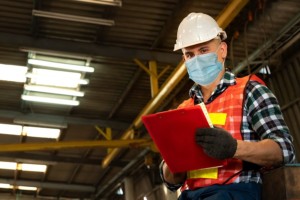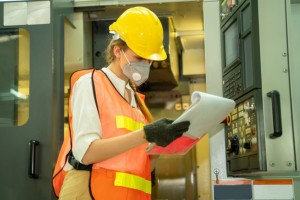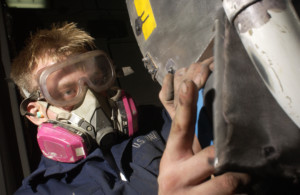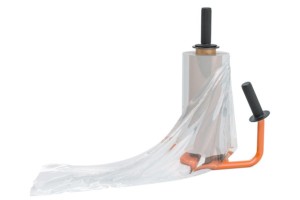 The Corona pandemic is still spreading around the world. Some countries could contain the virus, while it still spreads in others. Other countries are experiencing a “second wave”, which is bigger than the first wave. One of the potential ways to get infected is at work. Hence, I would like to write about ways to reduce the risk of infection at work. This is the second post on workplace safety during Corona. After this, another post will look at how Corona influenced logistics around the world. As before, I am an engineer and not a virologist. Hence, all virus-related information is only to the best of my knowledge. Use this information at your own risk. I still hope that it helps you to provide a safe environment for your people!
The Corona pandemic is still spreading around the world. Some countries could contain the virus, while it still spreads in others. Other countries are experiencing a “second wave”, which is bigger than the first wave. One of the potential ways to get infected is at work. Hence, I would like to write about ways to reduce the risk of infection at work. This is the second post on workplace safety during Corona. After this, another post will look at how Corona influenced logistics around the world. As before, I am an engineer and not a virologist. Hence, all virus-related information is only to the best of my knowledge. Use this information at your own risk. I still hope that it helps you to provide a safe environment for your people!
Ventilation
 The virus is transmitted, among other ways, through airborne droplets. The bigger ones fall down quickly, but the smallest ones can float in the air for quite some time. Hence, they can easily spread in a closed room. It seems that infections are more likely to happen in closed rooms than outdoors. Yet, you can’t really move your production lines outside. One often underestimated way to reduce the risk of infection is good ventilation. Open the windows, crank up the fans, and try to get fresh air in and stale, potentially viral air out. In manufacturing halls you can open the doors to help with ventilation.
The virus is transmitted, among other ways, through airborne droplets. The bigger ones fall down quickly, but the smallest ones can float in the air for quite some time. Hence, they can easily spread in a closed room. It seems that infections are more likely to happen in closed rooms than outdoors. Yet, you can’t really move your production lines outside. One often underestimated way to reduce the risk of infection is good ventilation. Open the windows, crank up the fans, and try to get fresh air in and stale, potentially viral air out. In manufacturing halls you can open the doors to help with ventilation.
Protective Equipment

Probably the most important personal protective gear is a facial mask to filter the air. They should be worn over mouth AND nose. If the nose hangs out, it will have little benefit.There are different types of masks. Surgical masks are designed to protect the environment from the wearer. When breathing in, some air may come in unfiltered from the edges of the mask. Only when breathing out is most air filtered.

The other type of mask are technically called respirators. There are single use respirators as well as reusable half or even full face mask respirators where you only swap the filter. They are designed to have a tighter seal around the face and to protect the wearer from the environment. These may have exit valves to make breathing easier, but in this case they do not protect the environment from the wearer. It seems the bigger benefit of masks is to protect others, hence surgical masks or even simple textile masks or shawls will be fine. If you use respirators, make sure they do not have an exit valve, so you can also protect others.


Some of your employees may wear protective breathing equipment by default, as for example welders or grinders. But keep in mind that these are usually designed to protect the welder from the environment, not the environment from the welder. Hence, ideally, the exhaled air would need to be filtered too. However, it may be a tough sell to convince the welder why he has to wear TWO masks. Luckily, most of these workplaces are distanced from the next one, anyway.
A mask may be uncomfortable to wear for longer periods, and some companies require it only when the worker is moving around. Since some air also escapes at the edges of the mask, glasses may have a tendency to fog up.
Some employees prefer to wear a face shield instead of a mask. I am not sure how effective these are, but you can see them in many supermarkets. In German supermarkets they are sometimes worn by staff instead of the mask, but I am doubtful if they protect against viral micro droplets floating in the air. For increased protection you may also wear goggles to prevent infection through the eyes, albeit this is mostly in hospitals when treating infected people.
 There are also all kinds of barriers in use. Some companies put up transparent plastic barriers or shields to reduce the exchange of air. I also have seen plastic tents around individual work places. These are sometimes only a metal structure around which industrial sized saran wrap was wrapped. Make sure you leave an opening for people to enter and exit! Another company where workers worked on both sides of a hanging conveyor simply put a sheet of plastic on the hanger, dividing it into a right and left half. The challenge is to find a way to put up a barrier without it being in the way (too much).
There are also all kinds of barriers in use. Some companies put up transparent plastic barriers or shields to reduce the exchange of air. I also have seen plastic tents around individual work places. These are sometimes only a metal structure around which industrial sized saran wrap was wrapped. Make sure you leave an opening for people to enter and exit! Another company where workers worked on both sides of a hanging conveyor simply put a sheet of plastic on the hanger, dividing it into a right and left half. The challenge is to find a way to put up a barrier without it being in the way (too much).
Hygiene & Cleaning
 Another important step is hygiene. Hand washing with soap and water and single-use towels is best. Make sure to get all corners of your hand and wrists clean. A secondary alternative are hand sanitizers. Make sure you get the type effective against viruses, as some brands are best against bacteria and not efficient against a virus.
Another important step is hygiene. Hand washing with soap and water and single-use towels is best. Make sure to get all corners of your hand and wrists clean. A secondary alternative are hand sanitizers. Make sure you get the type effective against viruses, as some brands are best against bacteria and not efficient against a virus.
Often, cleaning cycles are also increased. This is especially for surfaces that are frequently touched. Light switches, door handles, handrails on stairs, toilet seats, etc. would benefit from additional cleaning. If you can reduce the number of surfaces a worker has to touch, do so.
 If you ever considered having an automatic door, now is a good time! If you don’t have the money for that, there is also a low-cost alternative. You add a Gizmo to the door handle that allows you to press the lever and pull the door open with your elbow or lower arm. One such device is shown in the picture here. The pushing side of the door needs one to open it, the pulling side need one to close it.
If you ever considered having an automatic door, now is a good time! If you don’t have the money for that, there is also a low-cost alternative. You add a Gizmo to the door handle that allows you to press the lever and pull the door open with your elbow or lower arm. One such device is shown in the picture here. The pushing side of the door needs one to open it, the pulling side need one to close it.
Training
Finally, the last important step is training your employees. Teach them how to keep themselves and their colleagues safe. Motivate them to actually do it – there are many people that do not (yet) see the need for these actions. Follow up to see if the safety standards are actually followed. The best safety equipment does not help if your people don’t use it. And, don’t forget to lead by example!
Summary
The above measures reduce the risk of infection, but there is no 100% safety (there never really is). Research is still underway to determine the effect of different measures. In case of doubt, more is better. Also, follow the legal requirements in your location. Please take measures and lead by example. I don’t get those people who risk the health of themselves and others by refusing to wear masks, or wear them sloppily without covering the nose. Now, go out, put on your mask properly, wash your hands, stay safe, and organize your industry!

